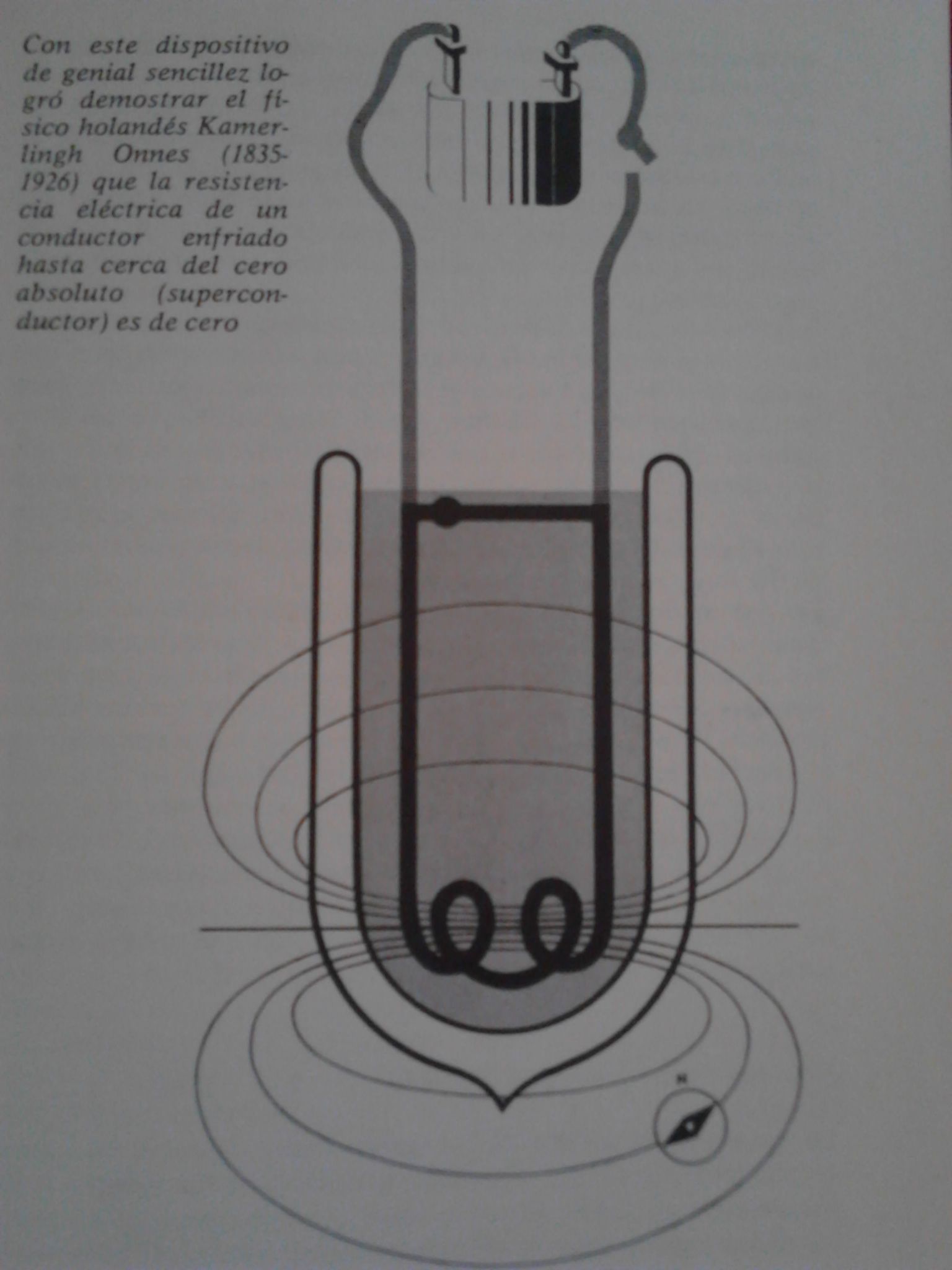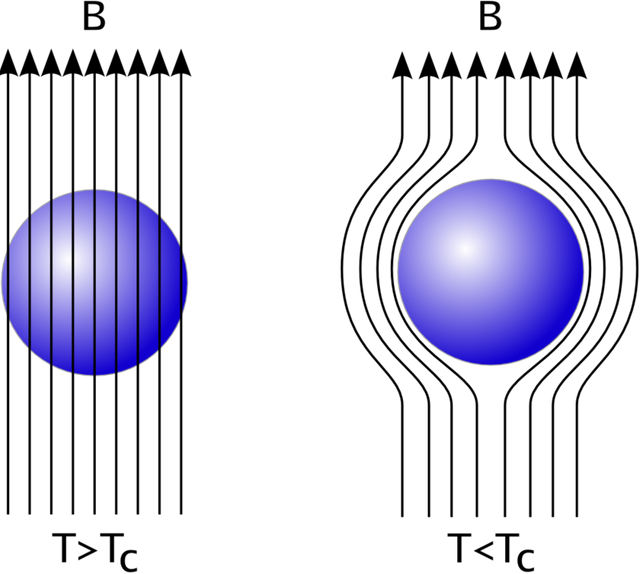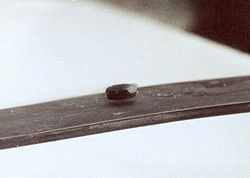Superconductivity
Hello friends of steemit, I want to talk to you about a topic that I researched when I did my masters in physics at IVIC.
What is a “superconductor”? In 1908 Karmerlingh Onnes managed to liquefy helium, a fact that occurs at a temperature close to 1 K. This event led to the study of physical phenomena at low temperatures. Onnes made metal resistance measurements varying the temperature. He was looking for the answer to two contradictory theories: the first established that when lowering the temperature the resistance would decrease and when approaching the absolute zero, it would also reach 0, since the conduction electrons do not collide with the ions that make up the metal network (at high temperatures the ions network is agitated by the thermal energy and this causes the collisions with the electrons which is what generates the resistance). The second theory assumed that by lowering the temperature, the conduction electrons would freeze; causing the resistance to become infinite as there would be no movement of electric charges. Surprisingly, when Onnes experimented with mercury, he discovered that the resistance became practically null when it reached 4.2 K and not near the absolute zero as expected. The mercury had become a perfect conductor and hence the term 'superconductor' came out. The experimental scheme of Onnes to measure the resistance and to proof if it really was zero, was simple but great: he made a design that consisted of a double-walled vacuumed containerfilled with liquid helium to achieve thermal isolation. Inside the container called Dewar tube was an electrical circuit, consisting of a coil and a switch of a superconducting material. The ends of the switch were connected to a battery by two conductors placed outside of Dewar. Also placed outside, a magnetic needle was suspended freely to measure the magnetic field that would be generated by circulating electric current through the circuit. At the beginning of the experiment both switches were open and obviously the magnetic needle did not register any magnetic field because there was no current circulation. Then he closed the normal switch and the needle showed the presence of a magnetic field. Then he closed the superconducting switch and opened the normal one. Although the battery was not supplying any current, the magnetized needle did not vary. This showed that the current continued circulating and thus generating its associated magnetic field.

For Onnes it was a great achievement, since it was the way to manufacture a superconductor electromagnet, but the big problem was that by varying the temperature, the superconducting state disappeared. Superconductors are perfect diamagnets, that is, they exclude field lines from their volume.

So when placing a magnet on a superconducting tablet this will levitate (known as the Meissner effect).

This accommodated the immense potentialities of superconductors. Prototypes of superconducting trains were constructed that were not viable (today they already exist) because of the cost of helium liquefying. Another interesting thing is that not all substances become superconductors, and there is a characteristic temperature called critical temperature or normal-superconducting transition. There is also a dependence on external magnetic fields, that is, if a material is in a superconducting state it can be taken out from that state by applying an external field and when reaching a particular value called a critical magnetic field. The theory represented a challenge that was explained through the BCS Theory in honor of its creators Bardeen, Cooper and Schrieffer, who managed to explain the phenomenon through a quasi-particle that they called Cooper pairs (but which is valid only at very low temperatures). A Cooper pair is a pair of electrons (negative charges that should mutually repel) join by the deformation of the network (which is 'quiet' due to the low temperature) generating a link between both negative charges. The issue was explained until the area was revolutionized in the1980s, when Bernorz and Muller found superconductivity at 'hightemperatures' (greater than the liquid nitrogen temperature of about74 K at atmospheric pressure) in LaBaCuO compounds (Lanthanum, barium, copper and oxygen). This is an open research topic since the BCS theory does not work at such high temperatures. Another different approach is through the Ginzburg-Landau theory,which focuses more on macroscopic properties than on microscopic theory, based on the of symmetries in the phase transition. Currently there are researchers developing the theory of bands to try to explain this phenomenon.
Imagen 1: Tomada de la referencia 1
Images 2 y 3: Tomadas de Internet.
References:
1.- La física. Walter Maechtle. 1974
2.- Superconductividad. Wikipedia
3.- Contrucción de un Susceptómetro de inductancias mutuas. Tesis de Maestría (IVIC). Emily Chávez. 1986
4. Notes of Dr. J.J Rodriguez Nuñez. 1991
Sería bueno contar con sus publicaciones para la comunidad científica de habla hispana que se agrupa en #stem-espanol
Ya estas publicando para la gran comunidad #steemSTEM y serás bienvenida para compartir tus conocimientos con nosotros
Gracias Giovanni, quizás hoy o mañana publique algo. Gracias
Listo, ya publiqué en stem-espanol. https://steemit.com/stem-espanol/@emily61/variedades-de-ordenes-magneticos-en-solidos. Espero te guste
Fine.
Thank you so much.
really cool .. wow you did your master degree time ago I still remember the IVIC those days ... it was nice ... did you live there while doing your degree?
Yes, I lived in casa 4.
that was kinda cool I guess
It was a very beautiful stage, full of hopes, achievements, friendships. I have the best memories.